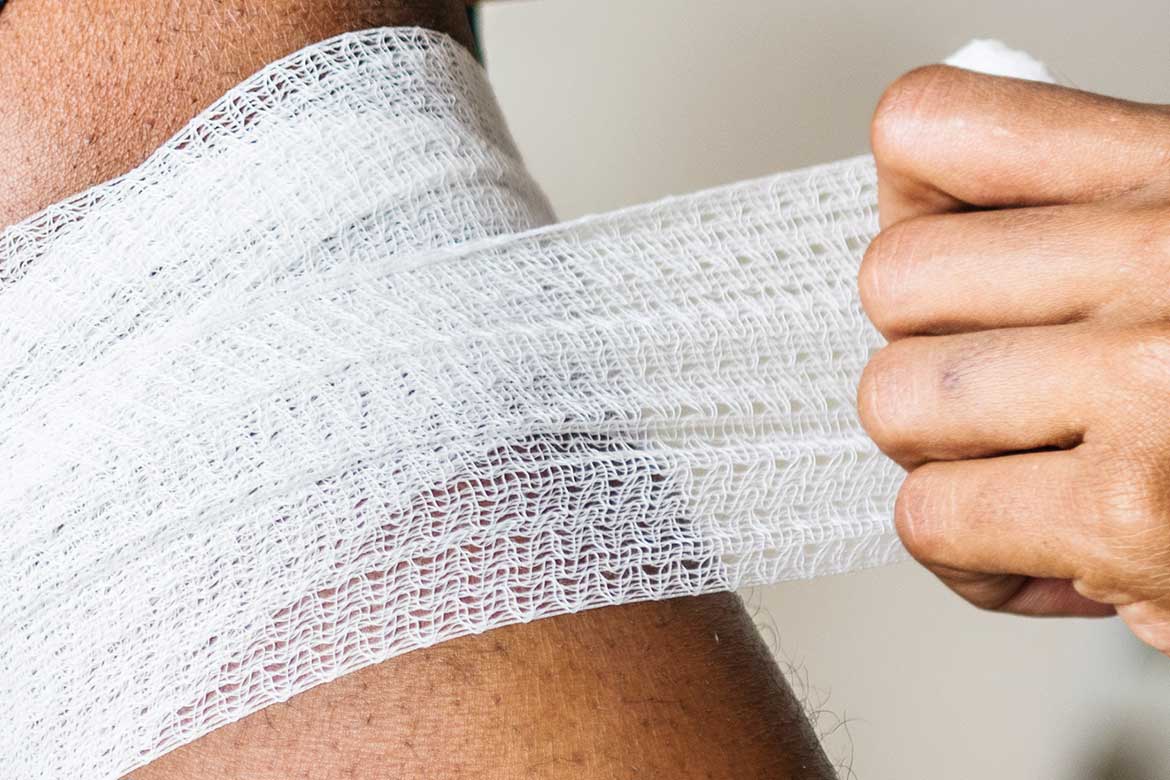14th August, 2024
Accident Books, The Law, And How To Complete Them
Do you need an accident book at work? When should you complete it? Who fills it in? Is the accident book a legal requirement? If you have questions about the accident book at work, this article is for you! Let's look at accident books, the law, and how to complete them.

An accident book is where your business can keep a record of workplace accidents.
Every workplace should have an accident book. It can help you keep track of, report, and learn from accidents. And yes, it's a legal requirement too.
The Accident Book is an essential document for employers and employees, who are required by law to record and report details of specified work-related injuries and incidents.
Legal Requirements
Accident books are a legal requirement.
More specifically, by law, every employer must record accidents to employees and visitors. Two key laws apply to accident reporting/recording at work:
- Social Security (Claims and Payments) Regulations (SSCPR)
- Reporting of Injuries, Diseases and Dangerous Occurrences Regulations (RIDDOR)
The SSCPR makes accident books a legal requirement for businesses employing 10 or more people. However RIDDOR reporting is a legal requirement for businesses of any size, so it makes sense for every workplace to keep an accident book to comply with the law.
Social Security (Claims and Payments) Regulations (SSCPR)
Many people think that the accident book is a health and safety requirement. After all, accidents are a health and safety issue. And regulations that require the reporting of accidents (like RIDDOR) are health and safety regulations too. So it might surprise you to find out that the law on accident books doesn't come from a health and safety regulation.

The legal requirement for an accident book comes under the Social Security (Claims and Payments) Regulations 1979 (referred to for the rest of the post as SSCPR).
The need to keep an accident book is tucked away in Regulation 25 of the SSCPR.
- Every owner or occupier (being an employer) of any mine or quarry or of any premises to which any of the provisions of the Factories Act 1961 F1 applies and every employer by whom 10 or more persons are normally employed at the same time on or about the same premises in connection with a trade or business carried on by the employer shall, subject to the following provisions of this paragraph—
- keep readily accessible a book or books in a form approved by the Secretary of State in which the appropriate particulars (as defined in regulation 24) of any accident causing personal injury to a person employed by the employer may be entered by that person or by some other person acting on his behalf;
- preserve every such book, when it is filled, for the period of 3 years beginning with the date of the last entry therein.
By law, any employer with 10 or more employees has to keep an accident book. The accident book must be accessible, and any accidents must be recorded in the accident book.
Under the SSCPR, the accident book must be kept by the employer for 3 years following completion.
Reporting of Injuries, Diseases and Dangerous Occurrences Regulations (RIDDOR)
The Reporting of Injuries, Diseases and Dangerous Occurrences Regulations (RIDDOR) also apply to accident reporting.
RIDDOR is a health and safety specific regulation. While it doesn't directly refer to the accident book, it does require employers to keep a record of any RIDDOR reportable accidents.
RIDDOR reporting is a legal requirement for businesses of any size. An employer (or a self-employed person) must keep a record of any reportable injury, over seven-day injury, disease or dangerous occurrence.
HSE guidance suggests that the accident book is a good place to keep these records. Since it will need to be completed for an accident anyway, you might as well avoid keeping duplicate records, and have all your accident records in one place.
In the case of accidents, employers who must keep an accident book (B1510) under Social security Law can use this for keeping the records of injuries although, a separate method will be needed for cases of disease.
For any RIDDOR reportable accidents, a report will also need to be made to the HSE. Find out more about what injuries at work are RIDDOR reportable?
Information Required
If an accident happens, the details of the accident and the injury should be recorded in the accident book.
Schedule 4 of the SSCPR lists the contents that should be entered into an accident book record as:
- The full name, address and occupation of the injured person
- The date and time of the accident
- The place where the accident happened
- The cause and nature of the injury
- The name, address and occupation of the person giving the notice, if someone other than the injured person.
Accident Book Responsibilities
The accident book should be completed by the injured person or someone acting on their behalf, in compliance with regulation 25(3) of the SSCPR.
may be entered by that person or by some other person acting on his behalf
In reality, that means that anyone can fill in the accident book, but it should be done with the knowledge of the injured person - after all, if you are not the injured person, you are recording the accident on their behalf.

In the form provided by the HSE in their official accident book, they ask for details of where and when the accident happened, and what happened. This is best completed by the injured person, as the person who had the accident is likely to have the fullest picture of what exactly happened.
The responsible person under RIDDOR is the employer. When an injured person (or a first aider, or someone else) fills in the details of an accident book, the employer should be notified so that they can:
- Investigate the accident
- Comply with legal requirements
Employers have legal responsibilities for the health and safety of their employees, and anyone else affected by their work. If an accident has happened, and someone is injured, then something has gone wrong, and the workplace or activity is unsafe.
The employer can use the information from the accident book to investigate the accident and determine the cause. The results of the accident investigation and any additional safety measures implemented can be kept with the accident record to give a full picture. This may include accounts from other witnesses of the accident and lessons learnt.
Employers will also have a legal responsibility to report the accident under RIDDOR if the injury is RIDDOR reportable.

Keeping Accident Book Records
Accident book records must legally be kept for at least three years. However, it is good practice to keep them for at least 6 years in case of legal action.
The accident book, and any following investigation, can give a complete record of the accident should an insurance claim be made, and should also be seen as an opportunity to improve health and safety and prevent future accidents.
The accident book should be kept by the employer, but there are times when a record may need to be shared with others:
- Safety representatives
- Government (e.g. Department for Work and Pensions)
- HSE
- As part of a claim
Most of the time, the details recorded in the accident book should be kept confidential and don't need to be shared or reported to external services like the HSE. Things like minor accidents need to be investigated by the employer but don't need to be recorded outside the organisation.
Safety representatives may ask for accident records, to carry out their role, and this must be shared.
Safety representatives are legally entitled to accident records that employers have to keep, by law
The employee will usually need to sign a declaration for the sharing of this information.

Data Protection
The pages of the accident book should be removed once completed. This is so that personal information from one form, isn't made available to anyone with access to the accident book.
When sharing accident book records with anyone other than the person detailed in the report, consider your data protection requirements. In the latest official accident book produced by the HSE, there is an option for the employee to tick if they consent to their personal information being shared with safety representatives. If they don't consent, then the contents of the report should only be shared with safety representatives once personal data has been removed.
anonymise the information if the injured person does not tick the tick box and disclose it to safety representatives and/or representatives of employee safety.
-- HSE Accident Book pg.1
Where data processing is necessary for compliance with a legal obligation, consent is not required.
Stop accidents before they happen with near miss reporting, and find out more about accident reporting in our RIDDOR eLearning health and safety course.
This article was written by Emma at HASpod. Emma has over 10 years experience in health and safety and BSc (Hons) Construction Management. She is NEBOSH qualified and Tech IOSH.
Need Health and Safety Documents?
Search hundreds of health and safety documents ready to edit and download for your business.
Health & Safety DocumentsRecent posts like this...

The Difference Between Site Specific And Generic Risk Assessments
If your health and safety management is being reviewed, you will often be asked for copies of site-specific risk assessments. And one of the reasons risk assessments fail the review is that they are too generic. So what do the terms site-specific risk assessments and generic risk assessments mean?
Read Post
10 Free Health And Safety Documents For Your Business
Do you need to create health and safety documents for your business? Want to save time on paperwork? Not sure where to start? Here are 10 free health and safety templates you can edit, fill in, download, and use. Created by health and safety experts, ready for your work.
Read Post
How To Use (And Understand) A 5x5 Risk Matrix
The 5x5 risk matrix might be something you've seen in health and safety documents, management systems, or something you've heard referred to in safety briefings. But what is the 5x5 matrix? What do the numbers mean? And what do the colours show? Here's how to use (and understand) a 5x5 risk matrix.
Read Post